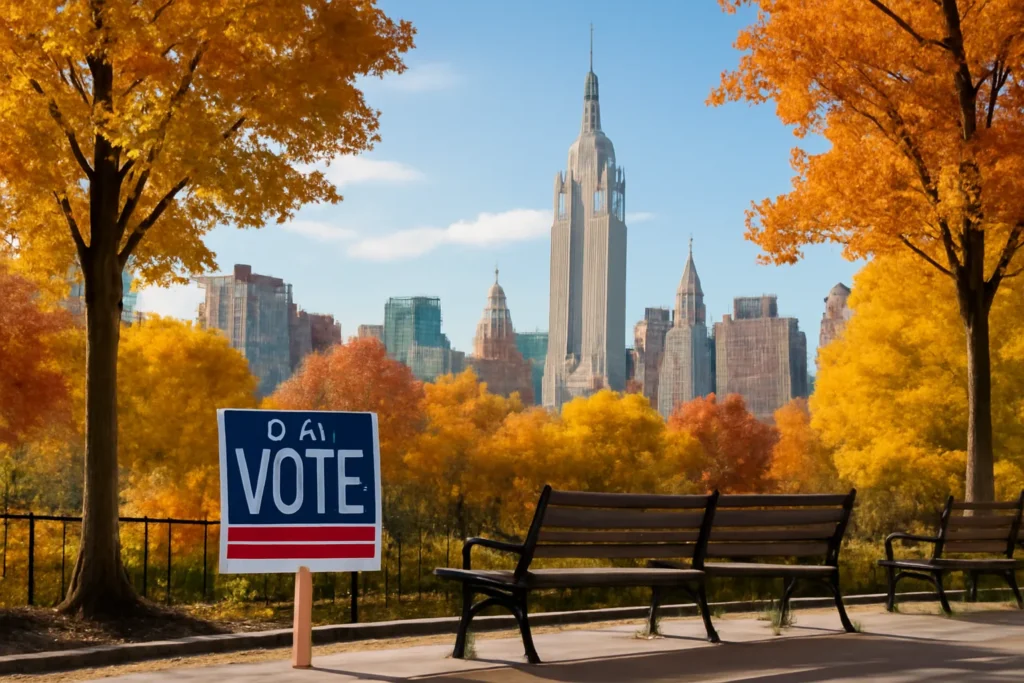The Battle Over New York’s Election Calendar: What’s Really at Stake?
Picture this: A sleepy off-year in American politics, local races decided on a chilly November day. Turnout hovers at a dismal 25%. At the firehall polling station, familiar faces cast their ballots amid empty booths—those who show up pick the future, while thousands stay home. Now, fast-forward to a presidential election year: The room buzzes, lines snake around the building, and candidates for Congress or governor dominate the headlines. But tucked beneath the fanfare, local races suddenly command new energy—and, crucially, a swell of fresh voices participating.
This is the new reality on the horizon for New York State. On the heels of a fierce, highly partisan legal contest, the Appellate Division of the State Supreme Court has ruled that the “Even-Year Election Law,” enacted in late 2023, is not only constitutional but will transform how local power is won and wielded from Buffalo to Babylon. Starting in 2025, most county, town, and village elections outside New York City will be held in tandem with state and federal contests, a shift that will reverberate through the Empire State’s political machinery for years to come.
Republicans fought back with force. As recently as last fall, county heavyweights like Onondaga County Executive J. Ryan McMahon and Nassau County’s Bruce Blakeman sounded the alarm, filing lawsuits and branding the measure a thinly-veiled Democratic power grab. Their legal challenge—built atop New York’s constitutional “home rule” guarantees—argued that counties should decide for themselves how and when to run their elections. A lower court agreed last October, triggering a wave of uncertainty and, for supporters of the law, frustration.
The appellate court’s unanimous opinion swept aside those objections, making it crystal clear: Nowhere in New York’s founding documents is “exclusive control” over elections handed to local governments. Instead, judges ruled, election timing is a matter of general law—subject to the will of the state legislature and, ultimately, the people.
Boosting Voter Turnout: The Numbers Tell the Real Story
What’s really driving this reform? To understand the stakes, look at the data. When New Yorkers head to the polls for presidential or gubernatorial contests, participation skyrockets. According to Pew Research, general election turnout nationwide in 2020 hit 67%, the highest in decades. By contrast, even critical local races held in off-years—when street repairs, sheriffs, or school budgets top the ballot—see barely one-third of eligible citizens making their voices heard.
Senator James Skoufis, a Democrat who sponsored the law, minced no words: “This is a win for voters and a win for democracy itself.” His office released figures showing that in odd-numbered years, turnout for important town and county contests languished at a paltry 20–30%. But in presidential years, turnout routinely doubled or even tripled, surging to 70–75%.
A closer look reveals a profound truth: The old system, favored by conservative incumbents and machine politicians, all but guaranteed low-turnout elections shaped by a motivated few. The result? Entrenched power, diminished accountability, and local representation that looked perilously unlike the communities it claimed to serve.
“When only a quarter of our neighbors are choosing the people who run our towns, we all lose. Aligning local elections with major contests is the bold step we need to revive local democracy.”
Democracy scholars agree. Columbia University political scientist Robert Erikson explains, “Turnout effects are clear and significant: When local elections piggyback on high-profile cycles, you see not just more voters, but a more diverse electorate. Marginalized groups, working people, and young voters are far more likely to participate.”
Beyond turnout, aligning election cycles can also save taxpayers money. Professor Caroline Tolbert of the University of Iowa points out, “Holding separate, low-interest elections is not just wasteful—it’s an anachronism.” Studies in California communities, which initiated similar reforms over the past decade, found hundreds of thousands in savings at the local level. The cost of democracy is real, but as Tolbert notes, “the price of exclusion is even steeper.”
Facing Fears and Debunking Conservative Talking Points
The progressive case for the Even-Year Election Law is clear: expanded participation, fairer representation, and deeper community engagement. But critics, especially from the Republican Party and suburban strongholds, aren’t backing down. Their chief argument? That local issues will drown in the cacophony of state and federal campaigns, leaving school board races or town supervisor contests lost amid the noise.
It’s a worry not entirely without merit. Yet history and empirical research suggest otherwise. When Michigan consolidated its local and state election calendars in the 2010s, studies by the University of Michigan found that local issue awareness did not meaningfully decline—instead, public engagement increased dramatically, and women and people of color were more likely to run for and win office. The oxygen for accountability didn’t dry up. Instead, democracy itself breathed a little easier.
So why do Republicans resist? As the New York Times recently reported, odd-year elections typically draw a narrower, older, and more ideologically conservative electorate. These dynamics benefit incumbents and parties able to “turn out their base”—historically, Republicans in suburban and rural New York. When more people, especially younger and more diverse voters, show up, the playing field shifts. Political power recalibrates. Is it any wonder, then, that so much energy was spent trying to overturn a law that promises broader participation?
The court’s ruling takes the wind out of these lawsuits, but New York’s highest court could still weigh in if conservatives press forward. For now, though, short-term disruptions—like some local officials serving one year less in office—seem a small price to pay for a seismic step toward a representative government worthy of the 21st century.
Will your local school board election finally reflect the values, hopes, and diversity of your community? Thanks to this ruling, the direction of local government is no longer decided by a privileged few, but by a chorus of voices across the state. It’s progress worth defending—not just in court, but in every ballot box.

